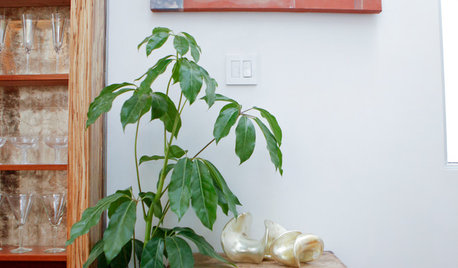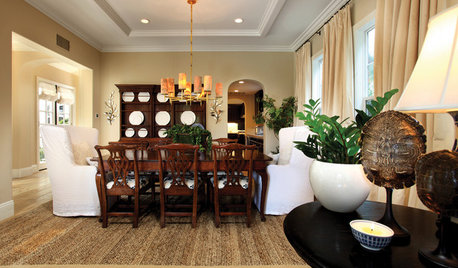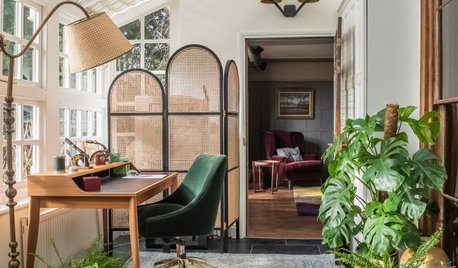growing houseplants in water vs soil
brit1
12 years ago
Related Stories

MOST POPULARThe Perfect Houseplant for People Who Kill Houseplants
If you can fill a jar with water, you can keep golden pothos vine happy — and it will pay you back with cleaner air and a greener home
Full Story
GARDENING GUIDESGrow a Beautiful Garden in Alkaline Soil
Got alkaline soil? Learn how to manage it and the many beautiful plants that will thrive in this ‘sweet’ soil
Full Story
DECORATING GUIDESMeet a Houseplant That Doesn't Mind Neglect
Got better things to do than remember to water your houseplants on schedule? Schefflera will forgive and forget
Full Story
HOUSEPLANTSMeet a Long-Lasting Houseplant With a Forgiving Heart
Low light and little watering won't scar Zee Zee plant for life; this East Africa native has a tolerant nature and an exotic beauty
Full Story
GARDENING GUIDESHouzz TV: Make a Worm Bin for Rich Soil and Happy Plants
A worm-powered compost bin that can fit under a sink turns food scraps into a powerful amendment for your garden. Here’s how to make one
Full Story
HOUSEPLANTSSimple Pleasures: Grow a Cheery Indoor Garden
Let houseplants work their magic on your rooms and you. These ideas will get you growing
Full Story
HOUSEPLANTS10 Top Plants to Grow Indoors
Brighten a room and clean the air with a houseplant that cascades artfully, stretches toward the ceiling or looks great on a wall
Full Story
LANDSCAPE DESIGNHow to Shape a Rain Garden and Create the Right Soil for It
Learn how to grade, lay out and amend the soil in your rain garden to support your plants
Full Story
HOUSEPLANTSHow to Grow Orchids Indoors
Orchids are the exotic aristocrats of the flower world and can make themselves comfortable in almost any home
Full Story
GARDENING GUIDES10 Solutions for Soggy Soil
If a too-wet garden is raining on your parade, try these water-loving plants and other ideas for handling all of that H2O
Full StoryMore Discussions









Johnsp
dellis326 (Danny)
Related Professionals
Ashland Landscape Architects & Landscape Designers · Milwaukee Landscape Architects & Landscape Designers · Oconomowoc Landscape Architects & Landscape Designers · South Elgin Landscape Architects & Landscape Designers · Canton Landscape Contractors · Jackson Landscape Contractors · Braintree Landscape Contractors · Chattanooga Landscape Contractors · Holtsville Landscape Contractors · Mastic Beach Landscape Contractors · Milton Landscape Contractors · Secaucus Landscape Contractors · Wickliffe Landscape Contractors · Springdale Handyman · Hillcrest Heights HandymanJohnsp
dellis326 (Danny)
pirate_girl
nancy_pnwzone8
brit1Original Author